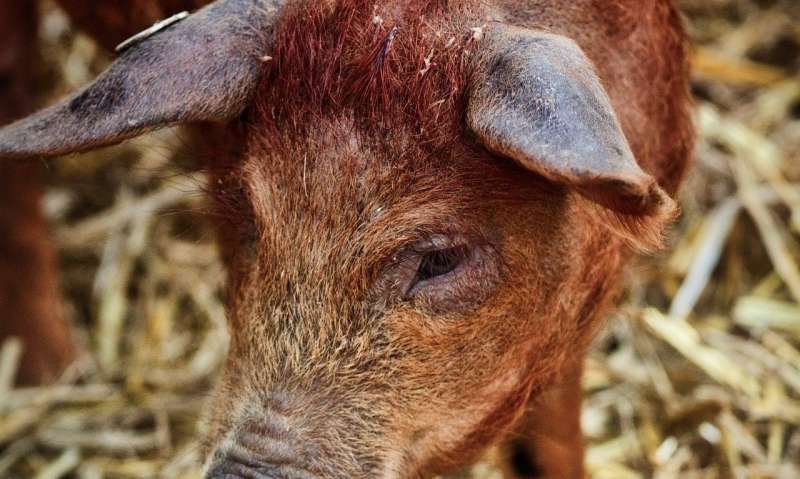More antimicrobial resistance in pigs than in broiler chickens in Europe

In the largest metagenomics study of production animals to date, the Technical University of Denmark has found more antimicrobial resistance in pigs than in broiler chickens, but a greater diversity of resistance genes in broilers.
Treating animals with antimicrobials can cause bacteria to become resistant, and these resistant bacteria can spread to humans through the food chain and close contact with animals. Solid data that show where, what type and how much antimicrobial resistance exists are necessary to combat resistant bacteria in the animals and to evaluate the effect of political initiatives aimed at limiting the presence of antimicrobial resistance.
This is why Denmark has monitored the presence of antimicrobial resistance and the use of antimicrobials in production animals and humans for more than 20 years through the DANMAP monitoring programme.
However, the current monitoring methods only show the tip of the iceberg, because they are based on isolating and growing specific disease-causing microorganisms and determining the occurrence of antimicrobial resistance specifically in those organisms.
New methods produce enormous datasets
Metagenomic sequencing on the other hand can provide a much more detailed picture of the extent of resistance, because this method maps out all of the DNA material in a sample and not just in selected organisms. As such, researchers can detect resistance in organisms, which they were unaware existed.
Researchers from the National Food Institute, Technical University of Denmark, led the largest metagenomics study of production animals to date where they—along with other European researchers—have mapped out the extent and type of resistance that is present in European pigs and broiler chickens.
The researchers used the DTU supercomputer Computerome to analyze the DNA sequences from faeces samples collected from more than 9,000 pigs and broilers on 359 farms in nine European countries. This resulted in the sequencing of more than 5,000 billion DNA nucleotides, which is equivalent to more than 1,500 human genomes.
Both well-known and surprising results
"As seen in previous studies of individual bacterial species, we have found a correlation between consumption and resistance. As such, we unsurprisingly found less resistance in Danish and Dutch farms, where farmers use lower amounts of antimicrobials than in the seven other countries," Postdoc Patrick Munk from the National Food Institute says.
"However, it was a surprise that while we found more resistance in pigs than broilers, there was greater diversity in the resistant genes in the broilers. We also saw large differences in the resistance profiles between countries, which are due to differences in antimicrobial use, differences in the bacterial composition and perhaps other unknown factors," he adds.
The researchers have also been able to use the study results to determine the spread of selected, problematic resistance genes such as mcr-1, which causes resistance to the antimicrobial colistin. The analysis shows that mcr-1 is most frequently found in Bulgarian and Italian broilers.
Metagenomic studies show lots of potential
Unlike traditional analytical methods, raw data from metagenomics studies can be reused in the future to examine other problems. As researchers detect more resistance genes, this will allow them to recycle raw data from old metagenomic sequencing studies to find out how these genes have emerged and spread.
"A digital archive of metagenomic data from production animals has great value and we therefore recommend that resistance monitoring methods based on metagenomic sequencing be introduced in addition to existing routine resistance monitoring," Patrick Munk says.
The study was conducted in cooperation with colleagues from the EU-funded project EFFORT. The results are described in further detail in a scientific article in the journal Nature Microbiology: "Abundance and diversity of the faecal resistome in slaughter pigs and broilers in nine European countries."
For the study, samples were collected from Belgium, Bulgaria, Denmark, France, Germany, Italy, the Netherlands, Poland and Spain.
More information: Abundance and diversity of the faecal resistome in slaughter pigs and broilers in nine European countries, Nature Microbiology (2018). DOI: 10.1038/s41564-018-0192-9
Journal information: Nature Microbiology
Provided by Technical University of Denmark















